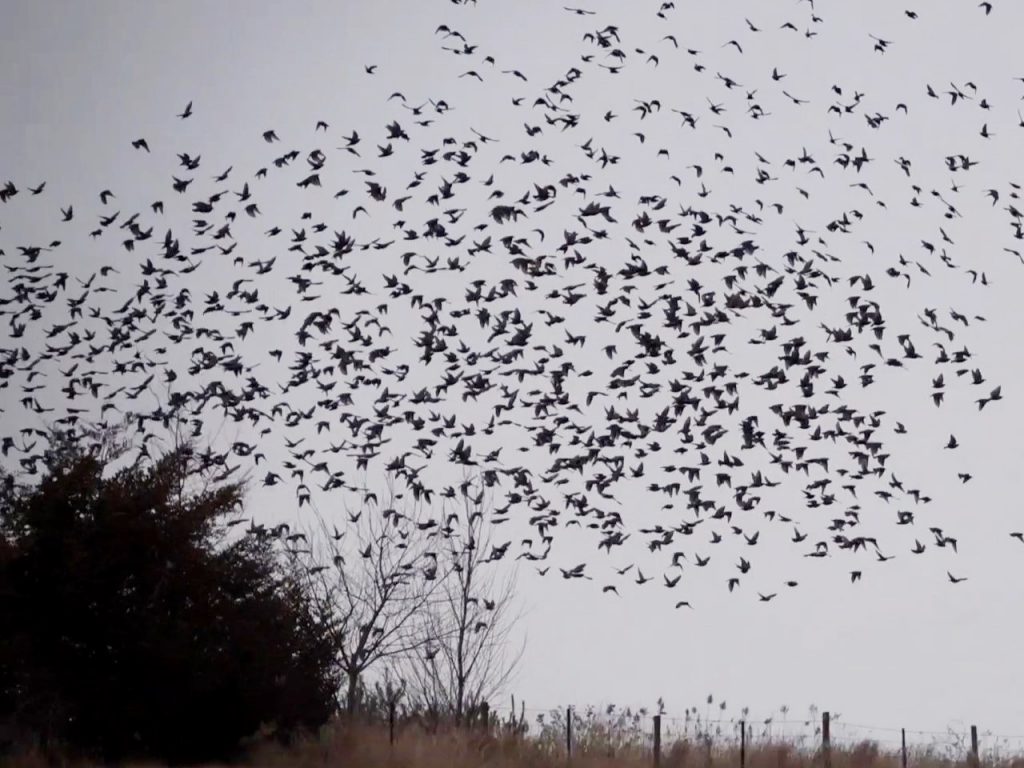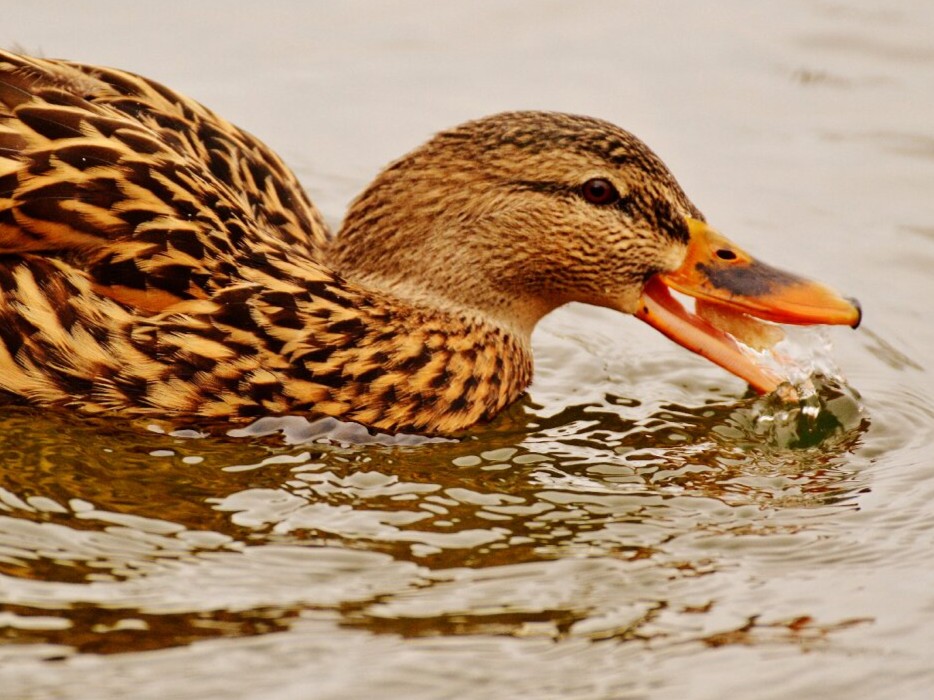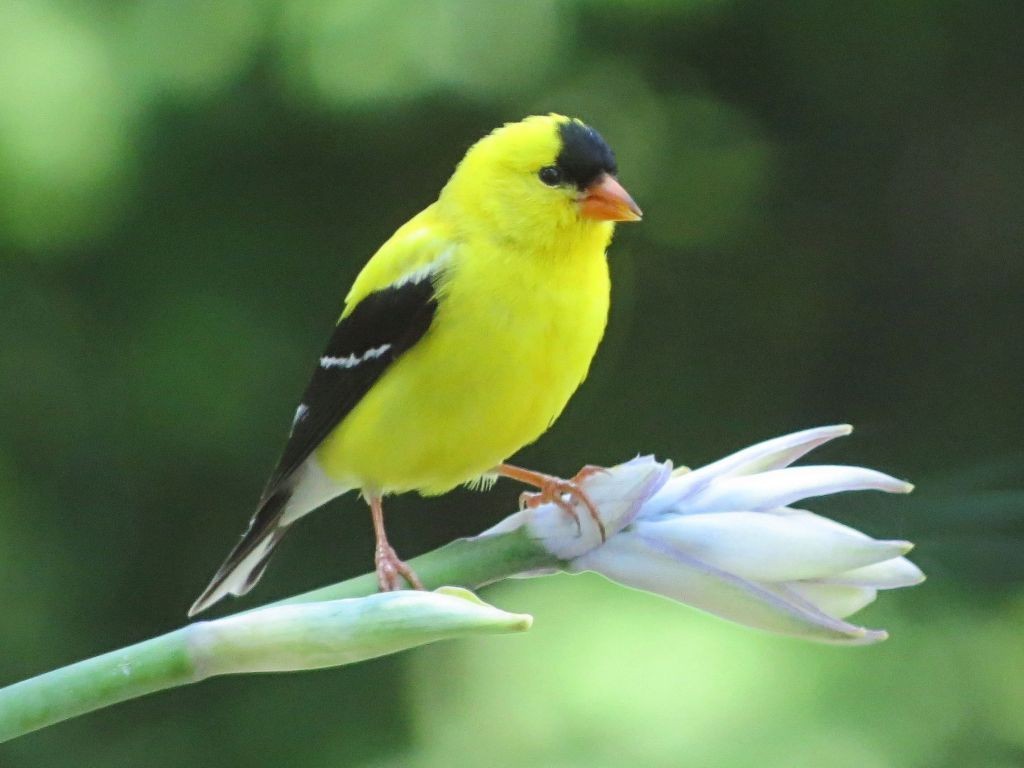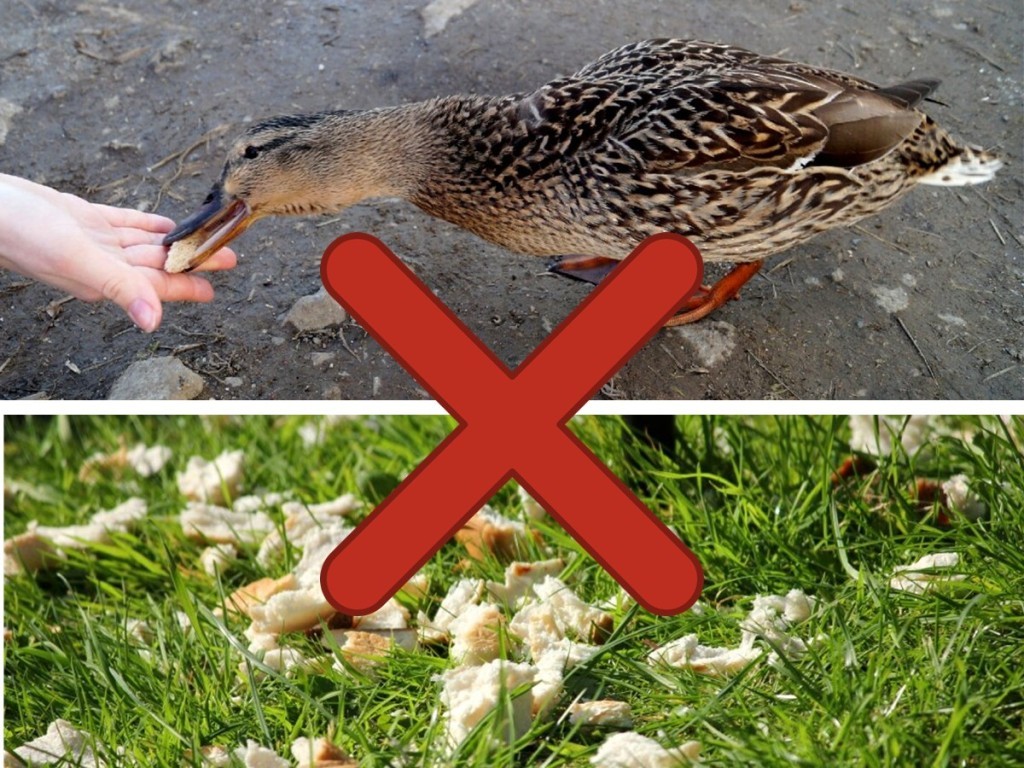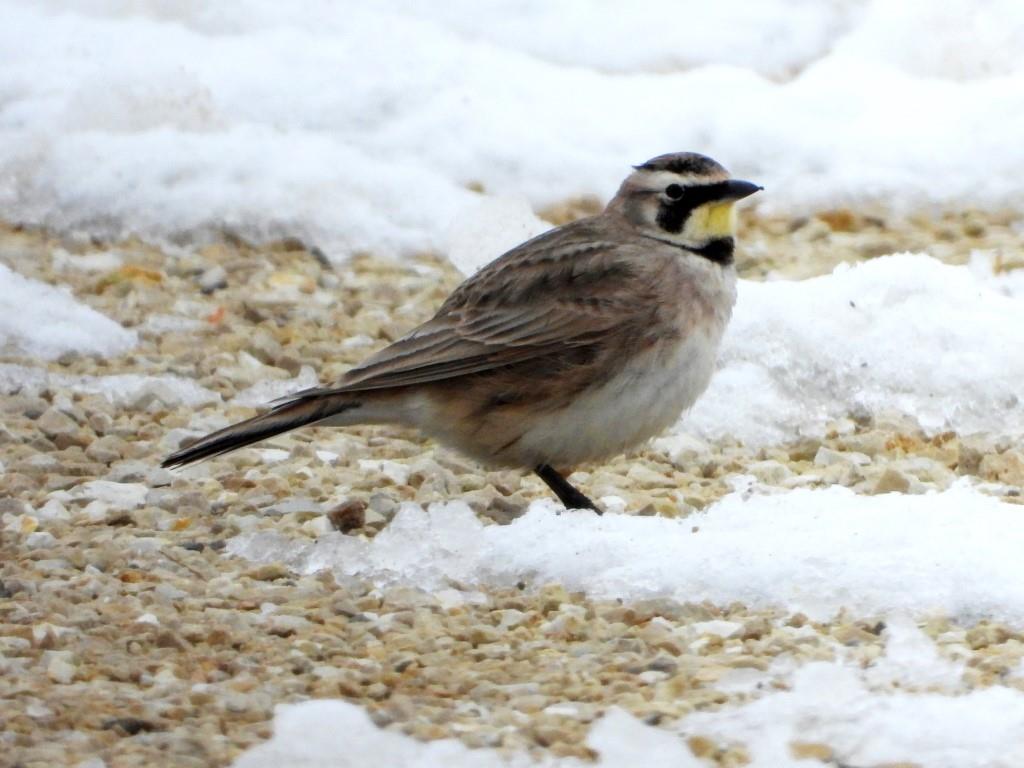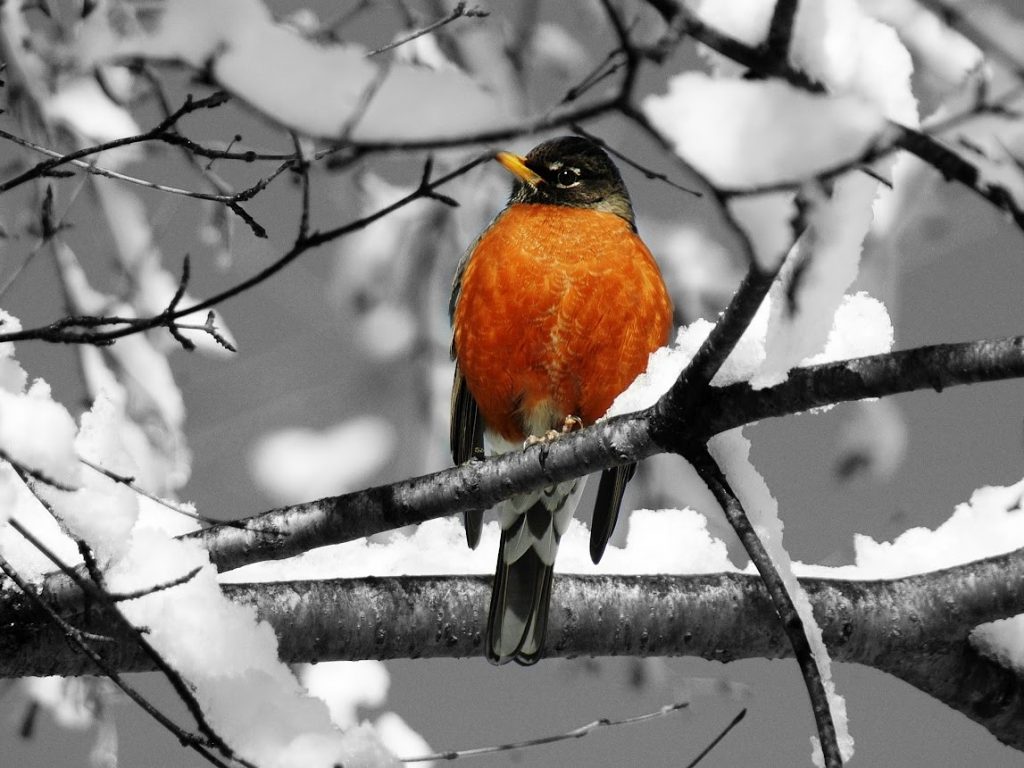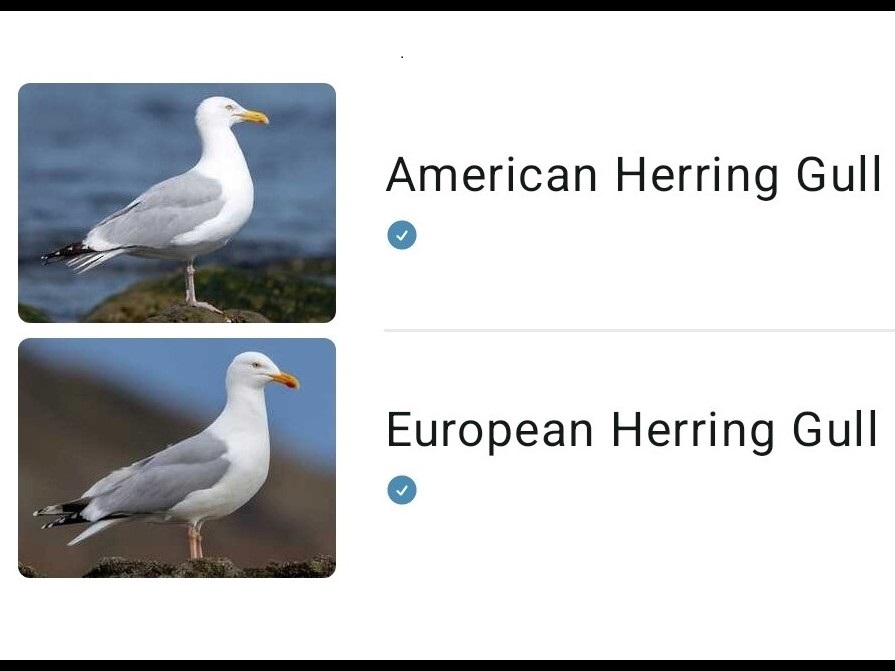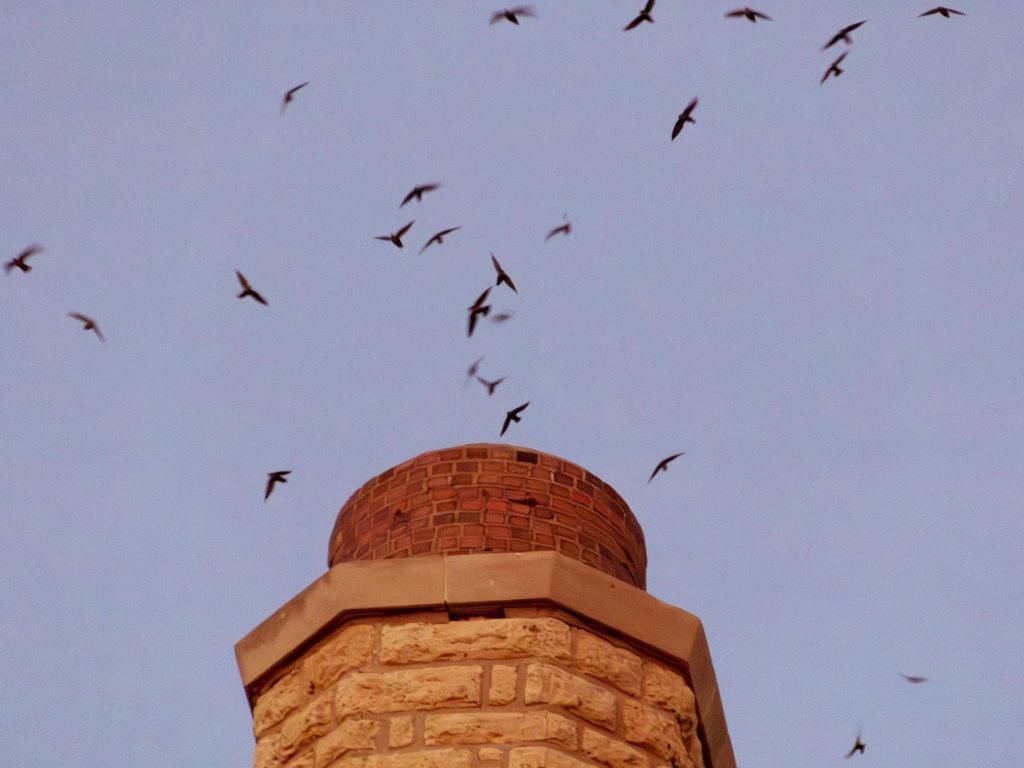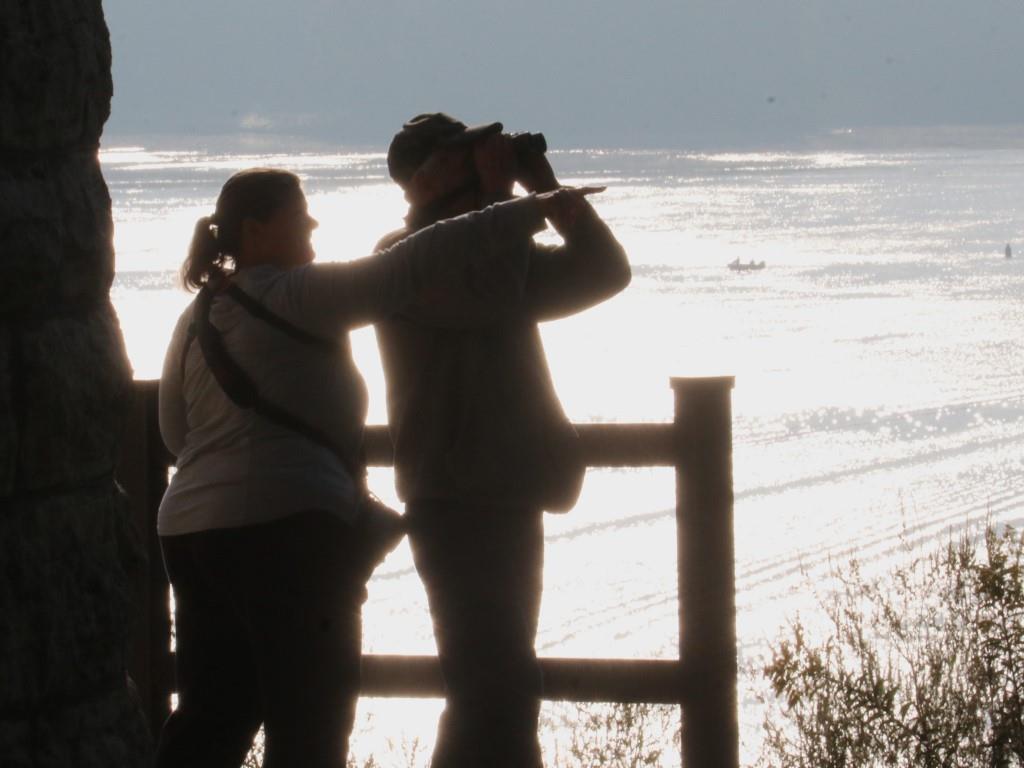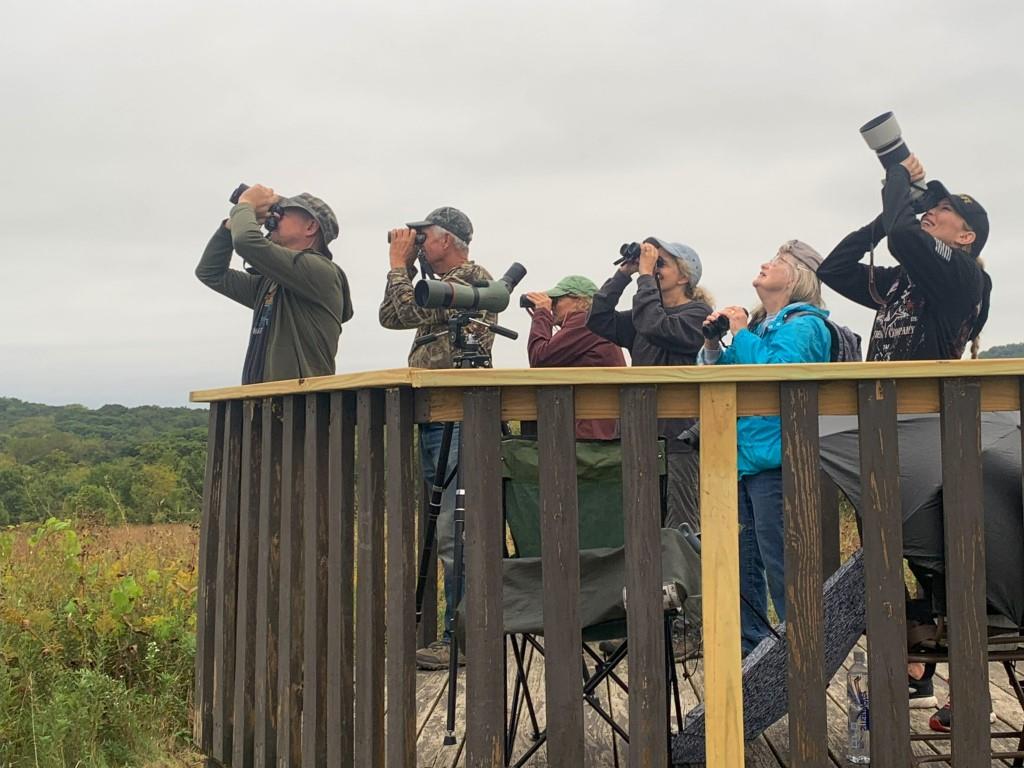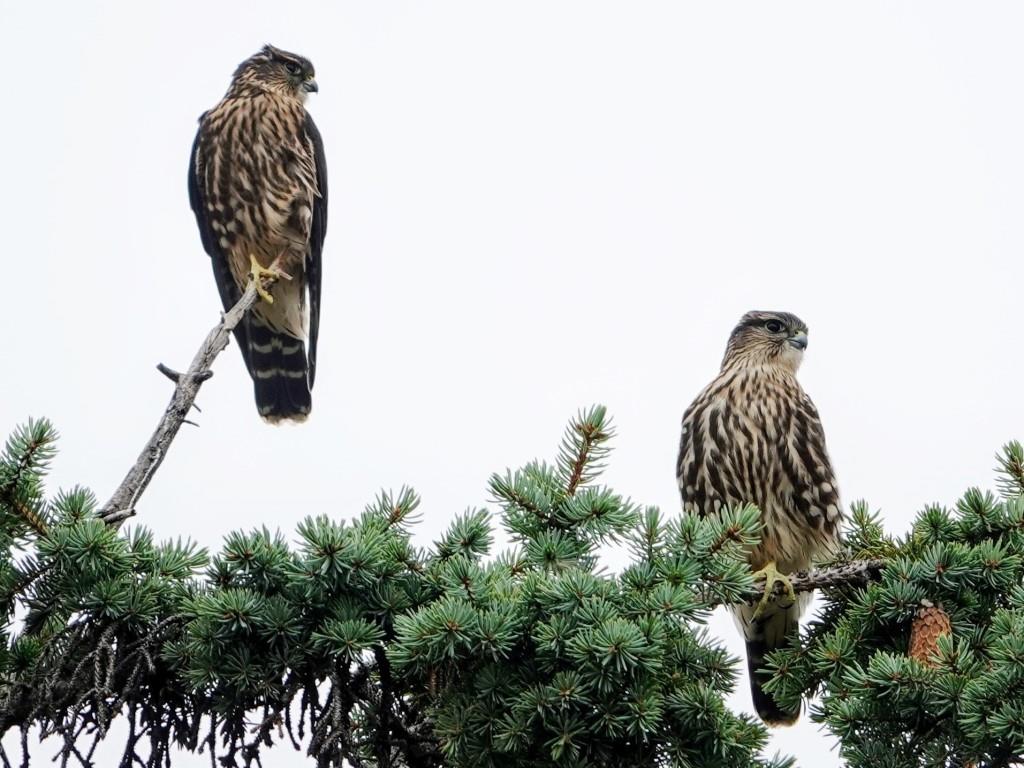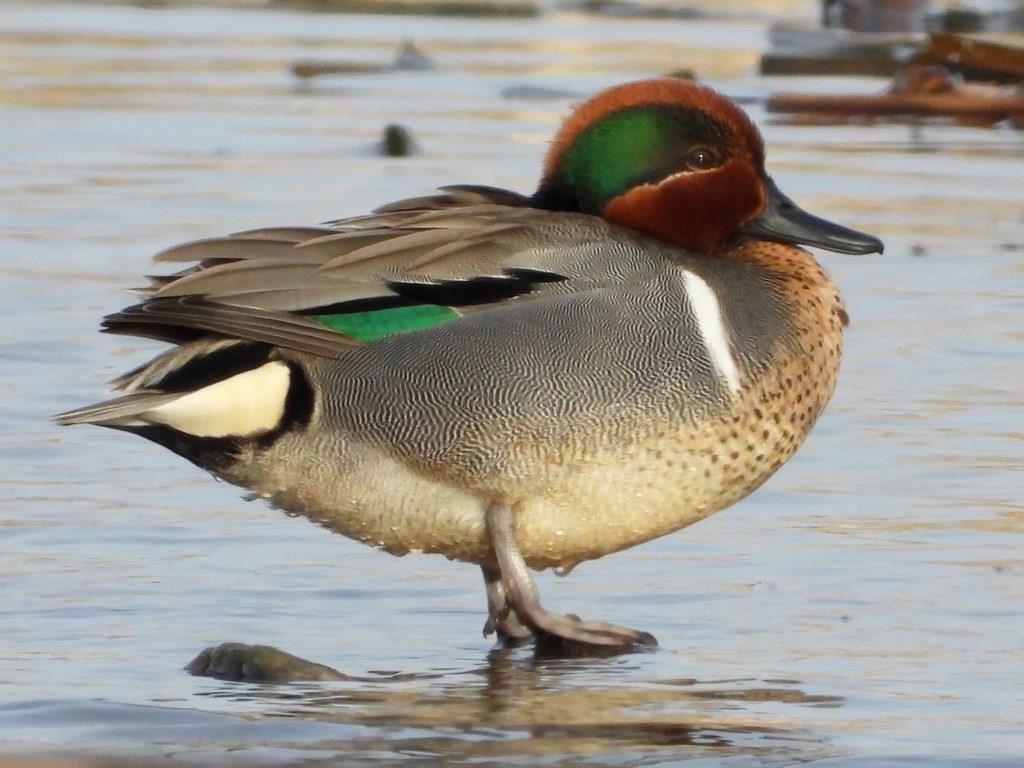By Marty Corfman
Dubuque Audubon Society President
I will never stop being awed by this phenomenon, called a murmuration, when birds fly in synchronized patterns. This time of year, these formations can be seen most often toward dusk, when birds are looking for a roosting site, but they can be seen throughout the day as well. Usually the birds are starlings, but often red-winged blackbirds or even common grackles will join in. You may also see rock pigeons murmurating – a beautiful sight in the sunlight, when it catches their iridescent colors. There are three basic rules observed by birds when they murmurate:
- Move in the same direction as their neighbors.
- Remain close to their neighbors.
- Avoid collisions with their neighbors.
The birds find safety in numbers, making it difficult for a predator to pick off an individual bird. There are lots of theories about the swarming behavior of many animals, including insects, fish, whales and mammals (like zebras). There have been tons of studies into the mathematical elements and effectiveness of swarming – or murmurating, for birds. But watching their graceful dance and soaking up the magic of a murmuration is enough for me.
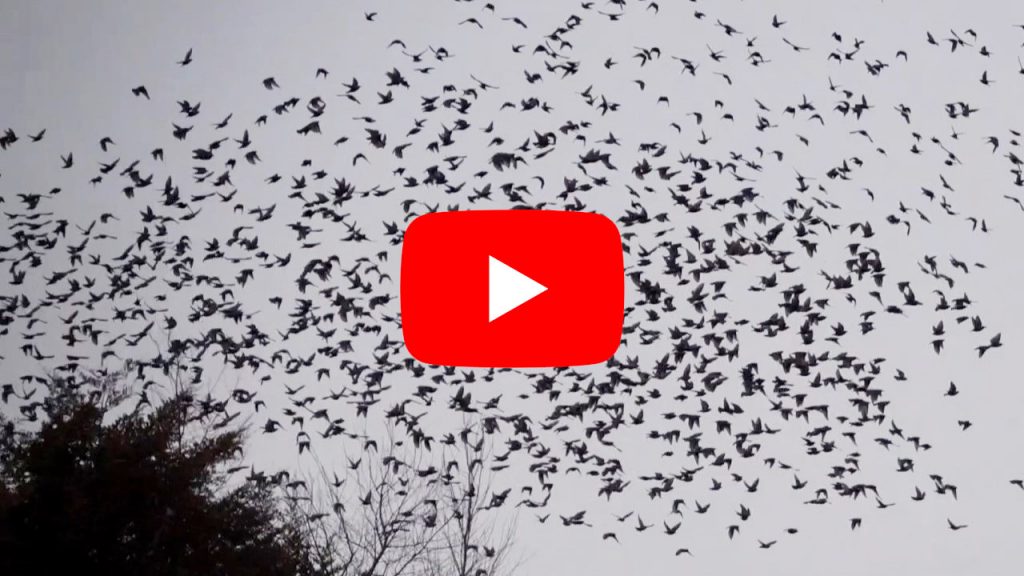
Eurpopean Starlings (and possibly some other blackbirds)
Whitewater Canyon Wildlife Management Area, Bernard, IA
12/17/24
© Marty Corfman

